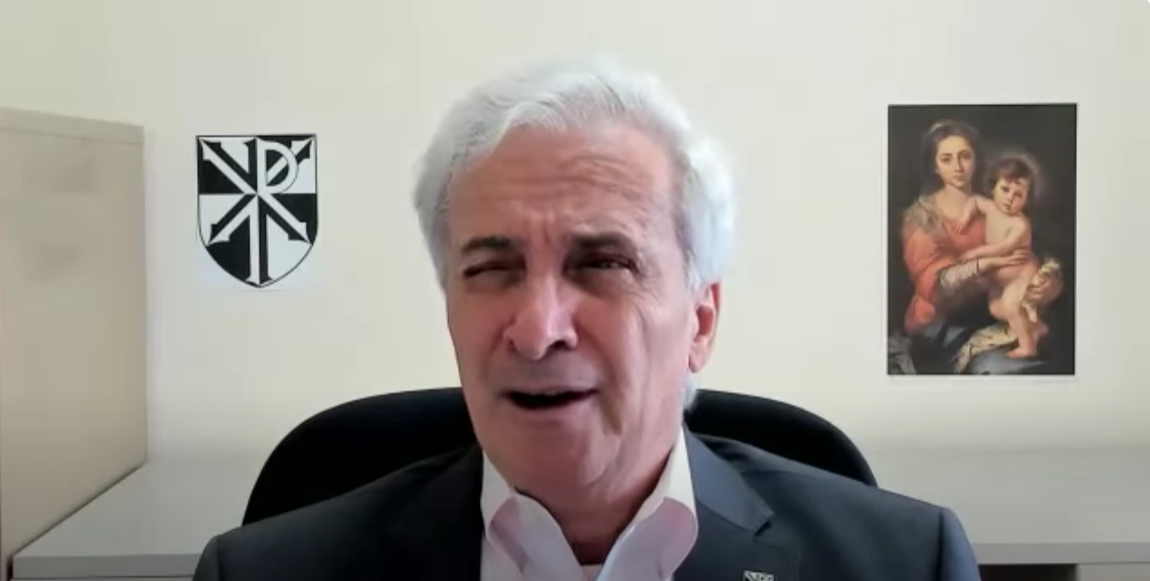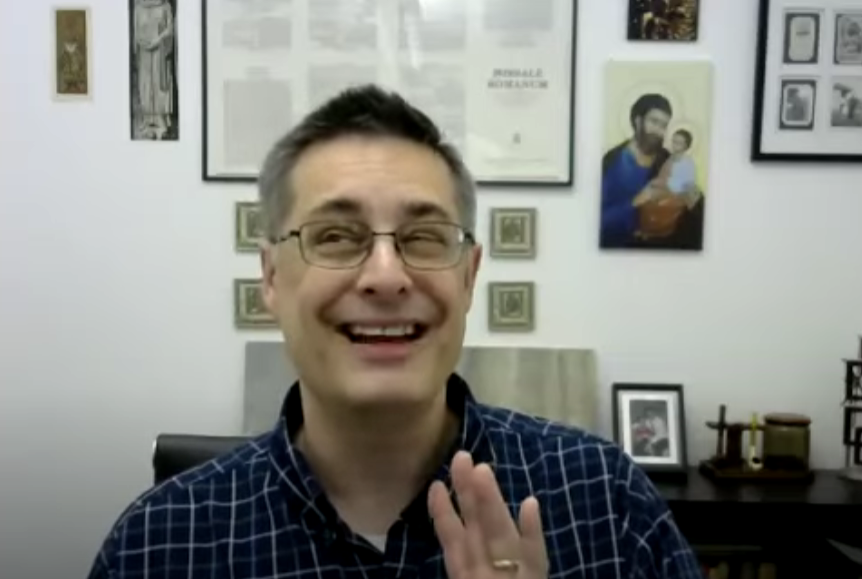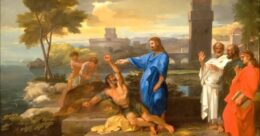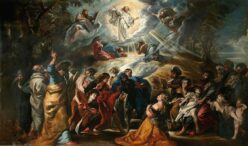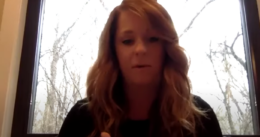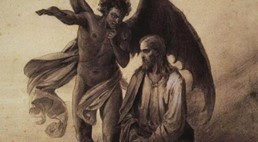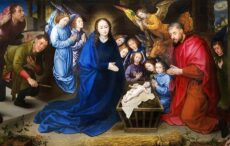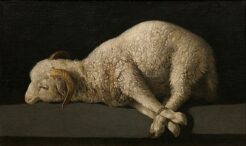If you love the Catholic Mass and wondered what we sing and why, this is the episode for you. Jim explains: -The common parts of Mass -The propers of the Mass -The Kyriale and different versions -The different Mass settings, and when they’re sung -When hymns are proper, and when they should be in Latin vs English And a lot more. This is a great opportunity to learn more about the Catholic liturgy. Join us!
Holy Week Insights and Customs with Louis Tofari, Episode 29
Welcome to Tradition, episode 29. Today we’re talking about Palm Sunday and Holy Week. If you love Catholicism, or you’re just curious about some of the customs of Catholicism, you’ll enjoy this conversation. Our conversation includes The little-known significance of palms in Greek and Roman culture The origin of ‘Spy Wednesday’ The history and meaning of Tenebrae A fascinating Mexican custom for Holy Saturday And so much more…. Louis always brings a lot to our conversations, but this time he makes some insights about the benefits of liturgical reforms and also includes a surprising reference to pop culture. You won’t be disappointed. Join us!
The fourth Sunday of Lent (known as Laetare Sunday): Grace Notes: Why we sing what we sing
Laetare, Jerusalem! Rejoice, Jerusalem! So starts the Introit for Sunday’s Mass. This marks the halfway point during Lent, and so we are given a bit of a respite from Lent’s austerities. We still sing a Tract instead of the banished Alleluia. We again sing Mass XVII(with Credo I), but the priest is not wearing the typical shade of violet! What is that color? It is rose (never to be called pink), and it is supposed to be a lighter shade of violet. So, still violet, but distinctively different, so as to set this Sunday aside as a day of rejoicing in the heart of the penitential season. Flowers, which are banned from the altar during Lent, are permitted on this day. And the organ, which is likewise banned during Lent, is permitted on this day.
Today is also the feast of Saint Joseph. Given that Laetare Sunday is a first-class feast, it cannot be displaced and so liturgically, Saint Joseph will be celebrated on the 20th.
Though we rejoice today, it is still Lent, thus at the processional, we sang The Glory of these 40 Days.
Normally, of curse, we honor Our Lady at the Offertory. On this day, we honored her by honoring her spouse, Saint Joseph, singing Te, Joseph, Celebrent.
This Sunday is also known as Mothering Sunday. This is owing to the Epistle, in which we are called sons of Mother Jerusalem and of the Free Woman. In Christian Europe, this was and is Mother’s Day. At the communion, we honored Our Lady in her motherhood by singing Salve Mater.
To conclude, again to honor saint Joseph, we sang the rousing Hail, Holy Joseph, Hail.
Third Sunday of Lent: Why we sing what we sing
With an interesting difference, this was a typical Sunday of Lent. The priest was again wearing violet, and of course, we sang Mass XVII, which is only used during Advent and Lent. With that, we sang Credo I.
Because it is Lent, the Mass calls for a Tract rather than an Alleluia.
This was the second Sunday of the month when the men of the Holy Name Society have their Sunday observances and corporate Communion. The Holy Name men processed in ahead of visiting priest and son of Saint Anthony’s, Father John Graziano, as we sang The Glory of These Forty Days.
At the Offertory, we sang the seasonal Marian antiphon from Compline, Ave Regina Caelorum.
At the Communion, in honor of the Holy Name, we sang Jesu Dulcis Memoria. We followed that with the Lenten piece, Attende Domine.
The interesting difference today was that we held a ceremony immediately after Mass to install the newly elected officers of the Holy Name Society. The ceremony began immediately after the Last Gospel as the faithful sang the great classic hymn patterned after the Te Deum, Holy God, We Praise Thy Name, with its very clear reference to the Holy Name of God.
During the hymn, the newly elected officers proceeded from the back of the chapel behind their banner. Once they arrived at the front, father intoned the Veni Creator Spiritus, rather a standard for such ceremonies. After the installation of the officers, we recited the Holy Name Pledge, then sang the Holy Name Anthem as a recessional.
SECOND SUNDAY OF LENT: Grace Notes: Why we sing what we sing
For the Second Sunday of Lent, we continue with our Lenten practices. The organ will be silent until Easter – with a couple of noteworthy exceptions, on Laetare Sunday and Holy Thursday. Of course, the Alleluia is suppressed entirely until the Mass of the Pascal Vigil. The priest was again wearing violet, and of course, we sang Mass XVII, which is only used during Advent and Lent. Note that there are two different versions of the Kyrie for Mass XVII. It’s entirely arbitrary, but we chose to sing Kyrie A. We will sing Kyrie B during Advent. With that, we sang Credo I.
The Tract was considerably shorter today than it was last week, and it introduced us to the melodies we will hear again at the afternoon Liturgy of Good Friday.
We sang Blessed Lamb at the processional. This is a thoroughly Lenten piece that speaks to Our Lord’s saving Blood.
At the Offertory, we sang the seasonal Marian antiphon from Compline, Ave Regina Caelorum.
At the Communion, the choir sang Meditabor, a polyphonic setting of the day’s Offertory antiphon. The schola followed that with Attende Domine.
We concluded Mass with The Glory of these Forty Days.
All in all, it was a very Lenten day.
What Does Modesty Really Mean in 2023 – Jessica Impson WtT Episode 28
Is modesty an objective thing? Should women wear skirts and dresses or risk immodesty? Is a woman who refuses to veil in church guilty of a sin? What about wearing yoga pants in public? Is it possible for a man to dress immodestly? My guest is traditional Catholic Jessica Impson and we discuss these and many other questions in this controversial episode. Like and share if you enjoy our content. You can reach Jessica at: https://www.facebook.com/groups/27337…
FIRST SUNDAY OF LENT: Grace Notes: Why we sing what we sing
There were several things that were noteworthy about the music for this, the First Sunday of Lent. Probably the most remarkable is the length of the Tract. Sung briskly, it takes almost 13 minutes to complete. There is a similarly long Tract on Palm Sunday, but today’s edges that one out slightly in terms of overall duration. The Tract itself is drawn entirely from Psalm 90. This is the psalm that the devil speciously quotes from when he tempts Our Lord, as recounted in today’s Gospel (which, of course, immediately follows this Tract):
He hath given his angels charge over thee, and in their hands shall they bear thee up, lest perhaps thou dash thy foot against a stone.
Another interesting thing about the music today is that all of the propers (Introit, Gradual, Tract, Offertory and Communion) are all drawn from that same Psalm 90. This is one of the very few times throughout the year where all of the propers come from the same psalm. And of course, Psalm 90 also shows up in the Gospel.
Also noteworthy today, we begin singing Mass XVII for Lent, and the organ will be suppressed until it makes a brief appearance on Laetare Sunday, and again on Holy Thursday. We arbitrarily choose Kyrie A during Lent (and B during Advent). We pair Mass XVII with Credo I.
We sang Blessed Lamb at the processional. This is a thoroughly Lenten piece that speaks to Our Lord’s saving Blood.
At the Offertory, we sang O Quam Glorifica in honor of Our Lady.
At the Communion, we again sang Parce Domine, and included the previously omitted 4th verse, which speaks of the forty-day fast.
We concluded Mass with The Glory of these Forty Days before singing Stabat Mater during the distribution of ashes.
Louis Tofari on Lenten Fasting and Traditions – WtT Episode 27
In this fascinating interview, you’ll learn: -What the Church really requires about fasting and abstinence -The important distinction between purple and violet in the liturgical life of the Church -When does Lent really end? Is it on Good Friday? At the Easter Vigil? The first mass of Easter morning? -Is it a sin to break your personal Lenten vow? And much more. Louis also shares some great reading recommendations.
THIRD SUNDAY AFTER EPIPHANY: Grace Notes: Why we sing what we sing
We are presently in the season of Epiphanytide, which occurs within Christmastide. The third Sunday after Epiphany is a Second-Class feast. For such a feast, the priest wears green, and that typically calls for Mass IV (for Ordinary Feasts) or Mass XI (for Sundays throughout the Year). We opted for Mass XI and paired that with Credo I.
Hanging on to Christmastide just a little longer, we sang Sleep, Holy Babe at the processional.
At the Offertory, still in the Christmas spirit, we sang Corde Natus ex Parentis.
January being the month of the Holy Name of Jesus, we sang Jesu Dulcis Memoria and Ecce Nomen Domini.
For the recessional, we sang the utterly delightful little Christmas tale, Noël Nouvelet, a very loose English translation of a French carol from the end of the 15th century.
SEXAGESIMA SUNDAY: Grace Notes: Why we sing what we sing
This was Sexagesima Sunday. And the evening before, we received word that Father had a sore throat and would not be able to sing the Mass.
We made do! Father was wearing violet. Had we sung the Mass, we would have sung Mass XI, as is called for in the Liber Usualis (without the Gloria, of course). We would have paired that with Credo I.
We did not sing a processional. We sang the Introit from the day as a hymn as Father recited the prayers at the foot.
At the Offertory, we sang Virgo Dei Genitrix in honor of Our Lady.
At the Communion, we sang the Tract of the day as a hymn. We followed that with three verses of Parce Domine, omitting the fourth verse which speaks specifically to the fast of Lent.
At the recessional, we sang God of Mercy and Compassion, which has a certain penitential feel to it without being full-on Lenten.
